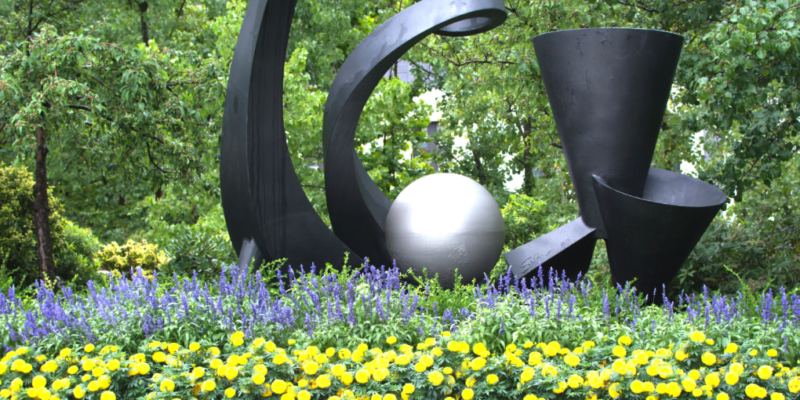Eastern Land Management is committed to providing significant economic benefits through sustainble best practices that improve landscape and ecosystem health, protect and conserve resources, and enhance healthier, higher-performing commercial landscapes.
On approach to 2026–our 50th year in business–we are doubling-down on our commitment to do our part to create a more sustainable, more environmentally-resilient, and more climate-positive future.
The path forward
- Recruit, train and develop landscape and snow professionals, and technical specialists who support our commitment to sustainability and drive progress on goals.
- Partner with the commercial real estate (CRE) community to provide landscape services and nature-based strategies that minimize environmental impacts, support green infrastructure, and harness the unique capacity of landscape to reduce and sequester carbon dioxide.
- Help our clients in commercial real estate and property and facility management to create sustainable value by conducting business with integrity and a shared commitment to advance climate action goals.
- Help our commercial real estate clients achieve net zero emission goals through a range of options, including robotics, autonomous mowers, smart technology framework, and alternative fuels.
- Help commercial real estate clients accelerate its transition to a regenerative economy through our commitment to and use of practices that drive carbon sequestration through soil regeneration, plant and ecosystem health.
- Help commercial real estate clients achieve a climate-positive profile through ongoing improvements in water conservation, irrigation technology, smart water management, ground water health, green waste composting, integrated pest management, resource conservation, erosion control, improvements in energy efficiency, and the use of green technologies that support green building and LEED initiatives.
- Help commercial real estate clients benefit from the ‘E’ (environmental) metric in ESG, and derive economic benefits that come from high-performing landscape and grounds management services.
Alliances
Our green framework is anchored by a network of sustainability thought leaders and stakeholders who care about these issues as much as we do.
- We partner with Aquarion Water Company to increase awareness and approaches to water conservation and drought management.
- We are Premier Partners with global irrigation technology pioneer Weathermatic.
- We train with world-class EV manufacturers and sustainable snow and ice consultants.
- We are EV-certified through the American Green Zone Alliance (AGZA).
- We are active members and leaders of national and local trade associations across the industries we serve, including the National Association of Landscape Professionals (NALP), Snow & Ice Management Association (SIMA), Building & Office Managers Association (BOMA) Southern Connecticut Chapter and BOMA Westchester County, and the Bridgeport Regional Business Council.
- We are certified professionals with advanced accreditation from both the Green Industry and Snow & Ice Industry.
- We have a dedicated sustainable snow/ice and winter operation at our green hub and brine-making facility, located in Monroe Connecticut.
- We provide services that support LEED criteria and work with LEED-certified properties across the CRE spectrum.
- We are experienced in navigating complex logistics for on-structure landscapes and complex commercial sites, including environmentally-sensitive watershed-adjacent, multi-grade, and elevated terrains.
- We have won national Awards of Excellence for our clients across categories, including recognition for Class A green roofs and “green cities” initiatives for urban redevelopment.
- We were recognized as a 2030 Sustainability ChangeMaker by Fairfield County for drought and water management leadership and contribution to urban sustainability.
Advocacy
- We believe landscape professionals are uniquely situated to advocate for and lead on sustainability.
- We will continue to collaborate with clients, suppliers and allied professionals to champion better ways to make Connecticut and Westchester County, NY, water smart, green smart, and healthier more beautiful places to live, work and play.
For more information on ELM’s path to sustainability, go to: Sustainability | Eastern Land Management | Commercial Landscaping CT & NY
References:
https://www.easternland.com/meet-elms-silent-weapon-in-climate-positive-noise-reduction/
https://www.easternland.com/elms-green-infrastructure-program-is-tackling-urban-stormwater/
https://www.easternland.com/from-the-ground-up-why-soil-regeneration-leads-to-healthier-landscapes/
https://www.easternland.com/elm-is-driving-the-e-in-esg-heres-why-that-matters/









